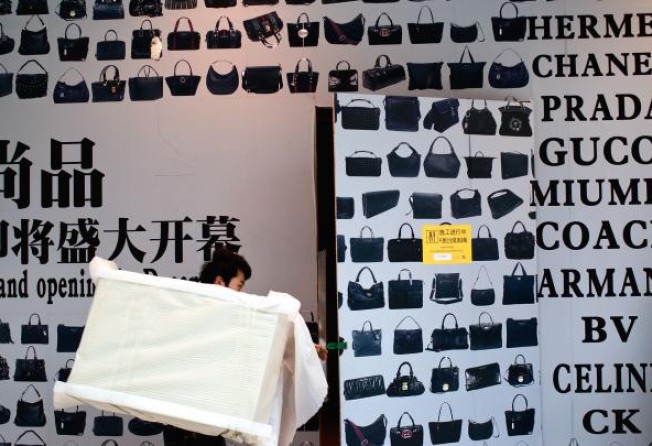Luxury brands still reaping big rewards in China

The profit margins of global luxury goods retailers on the mainland are so substantial they are shocking, according to an industry insider.
A report aired on CCTV on Sunday, which conducted price-to-price comparisons of different luxury items in Europe, the US and China, found huge “unaccounted” mark ups on most products even when factoring in China's high luxury goods taxes.
“The profits [luxury brands] are making in the China market will scare you to death!” said Lu Xiaoming, former head of luxury label Montblanc’s China operations.
Many believe China’s high import duties for luxury goods encourage consumers to leave the country to make their big ticket purchases. A Chanel bag in Shanghai, for instance, costs 45 per cent more than in Hong Kong and 72 per cent more than in Paris. The same Tiffany & Co necklace retails in the US at 6,900 yuan butt 11,000 yuan on the mainland.
This is part of the reason why 60 per cent of luxury purchases are made overseas, according to management consultancy Bain & Co.
But despite a recent slowdown in domestic luxury goods consumption, Lu believes the biggest retailers are still having a field day doing business in China - home to the world’s top luxury goods spenders - and will be reluctant to cut prices in the future.
Take, for example, the universally adored Burberry scarf. One of these cashmere must-haves would cost about 2,400 yuan (HK$3,000) in London. However, in China, the same scarf would cost a whopping 4,500 yuan.
Even if you add China’s 25 per cent customs duty and 15 per cent value-added tax to the London price tag, it would only increase it to 3,408 yuan, according to the report, leaving a mysterious margin of 1,000 yuan.
While logistics costs are known to be high in China, other costs including labour, materials, manufacturing and advertising are still cheaper compared to the West.
So where do these huge price mark-ups come from?
Goods are priced on the ability of consumers to pay. As most of China's noveau riche are willing and able to pay high prices right now, brands are setting their price points high, according to the report.
“The pricing strategies adopted by these brands reflect that they have already determined that purchasing power [for luxury goods] will be higher here in this emerging market than Europe and the US,” said Lu in the CCTV interview.
China recently replaced Japan as the second largest luxury goods market in the world, second only to the United States.